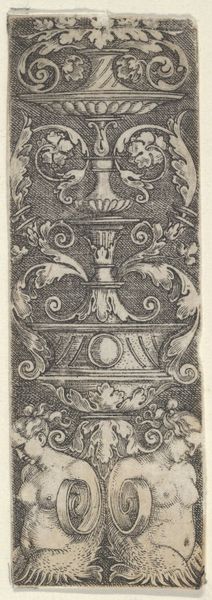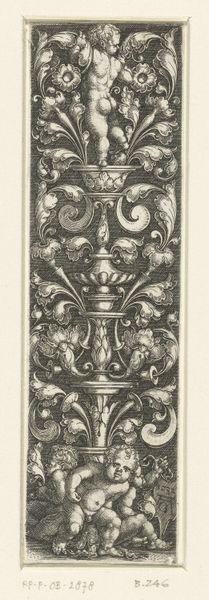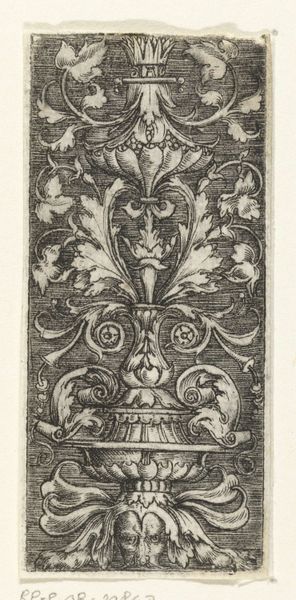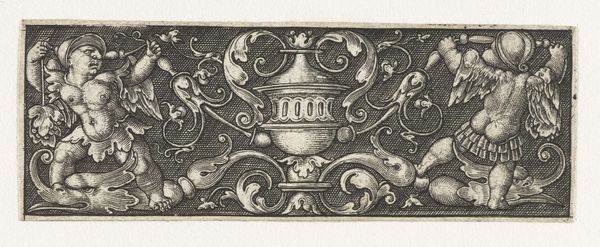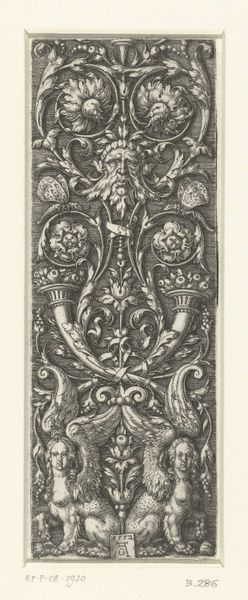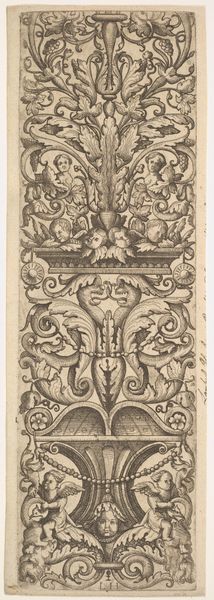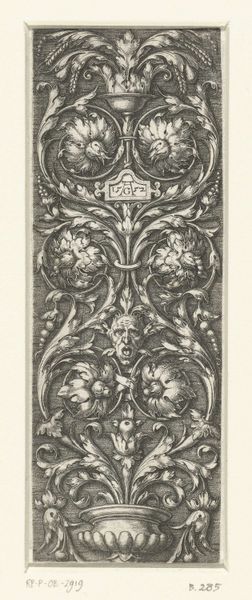
ornament, print, engraving
#
ornament
# print
#
figuration
#
11_renaissance
#
line
#
engraving
Dimensions: height 81 mm, width 28 mm
Copyright: Rijks Museum: Open Domain
Editor: Here we have "Ornament met kandelaber en twee sirenen," an engraving made between 1520 and 1562 by Monogrammist AC. It's very detailed, all these lines and shapes – it looks like something used to decorate a fancy object. What do you make of this as a piece of art? Curator: Well, seeing this engraving, I immediately consider the economic implications of printmaking in the Renaissance. This wasn’t ‘high art’ intended for a wealthy patron’s private collection. It was a repeatable image, an early form of mass production intended for consumption. Editor: So, its value comes more from its accessibility and usage? Curator: Precisely! Think about the artisan who would use this design. How might they adapt it for a silver goblet or woven tapestry? The print itself is just a means to an end, an instructional tool and commodity more than an end product. Also, consider the cost of materials—the paper, the ink, the engraving tools—and the labour involved in each impression. Editor: I see. So instead of focusing on its aesthetic beauty, we should analyze it as part of the 16th-century production and consumption cycle. It blurs the lines between art and craft. Curator: Exactly. The labor is intrinsic to understanding the social relevance of this period's printed images. It invites us to examine the artistic exchange, patronage and function of ornamental prints like this in a very specific period. Editor: That's a completely different way of viewing art than what I'm used to! Thanks for shedding light on the material conditions of artistic creation! Curator: My pleasure. Considering the art's existence as a commodity and instruction manual illuminates its societal influence.
Comments
No comments
Be the first to comment and join the conversation on the ultimate creative platform.
